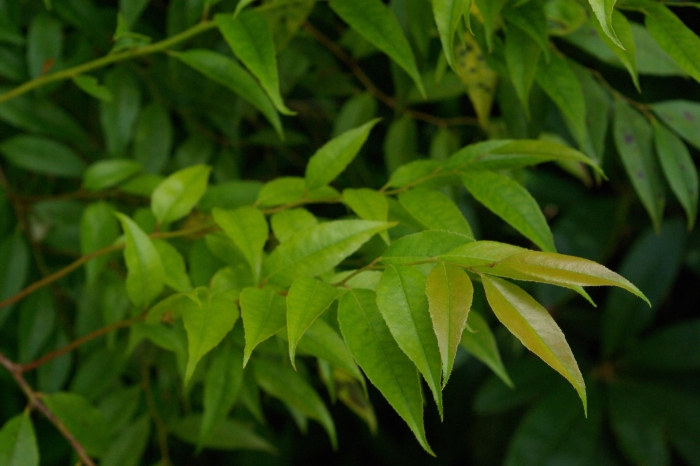Florida Hobblebush
(Agarista populifolia)
Florida Hobblebush (Agarista populifolia)
/
/

El Funcionario
CC BY-SA 4.0
Image By:
El Funcionario
Recorded By:
Copyright:
CC BY-SA 4.0
Copyright Notice:
Photo by: El Funcionario | License Type: CC BY-SA 4.0 | License URL: https://creativecommons.org/licenses/by-sa/4.0 | Uploader: El Funcionario | Publisher: Wikimedia Commons | Title: Agarista_populifolia,_Conservatoire_botanique_national_de_Brest_03.jpg | Notes: Uploaded own work with UploadWizard |





























Estimated Native Range
Summary
Agarista populifolia, commonly known as Florida Hobblebush, is an evergreen shrub native to the understory of moist to wet woodlands, swamps, and along stream banks in the southeastern United States. It typically grows to a height of 8-12 feet and a width of 5-6 feet, forming dense thickets that can be difficult to penetrate, hence its common name. The shrub features long, arching stems that often lean and create an interwoven appearance. Agarista populifolia blooms in late winter to early spring, producing small, bell-shaped white flowers that hang on the underside of its branches, adding subtle beauty to the garden.
The Florida Hobblebush is valued for its lush, dark green foliage and its ability to thrive in shaded conditions, making it an excellent choice for woodland gardens, naturalized areas, or as a background plant in shaded borders. It prefers part shade to full shade, consistent medium moisture, and well-drained soils with rich organic matter. While it is generally low-maintenance, it can be susceptible to leaf spot diseases in overly wet conditions. Gardeners should also be aware that it can form extensive colonies through suckering, which may require management in smaller garden settings.CC BY-SA 4.0
The Florida Hobblebush is valued for its lush, dark green foliage and its ability to thrive in shaded conditions, making it an excellent choice for woodland gardens, naturalized areas, or as a background plant in shaded borders. It prefers part shade to full shade, consistent medium moisture, and well-drained soils with rich organic matter. While it is generally low-maintenance, it can be susceptible to leaf spot diseases in overly wet conditions. Gardeners should also be aware that it can form extensive colonies through suckering, which may require management in smaller garden settings.CC BY-SA 4.0
Plant Description
- Plant Type: Shrub
- Height: 8-12 feet
- Width: 5-6 feet
- Growth Rate: Moderate
- Flower Color: White
- Flowering Season: Spring, Summer
- Leaf Retention: Evergreen
Growth Requirements
- Sun: Part Shade, Full Shade
- Water: Medium
- Drainage: Medium
Common Uses
Bee Garden, Bird Garden, Butterfly Garden, Erosion Control, Fragrant, Hedges, Low Maintenance, Showy Flowers, Street Planting
Natural Habitat
Moist to wet woodlands, swamps, and stream banks in the southeastern United States
Other Names
Common Names: Pipeplant, Pipestemwood
Scientific Names: , Agarista populifolia, Leucothoe populifolia, Leucothoë populifolia, Andromeda formosissima, Leucothoe acuminata, Leucothoe walteri, Andromeda laurina, Andromeda reticulata, Andromeda walteri
GBIF Accepted Name: Agarista populifolia (Lam.) Judd